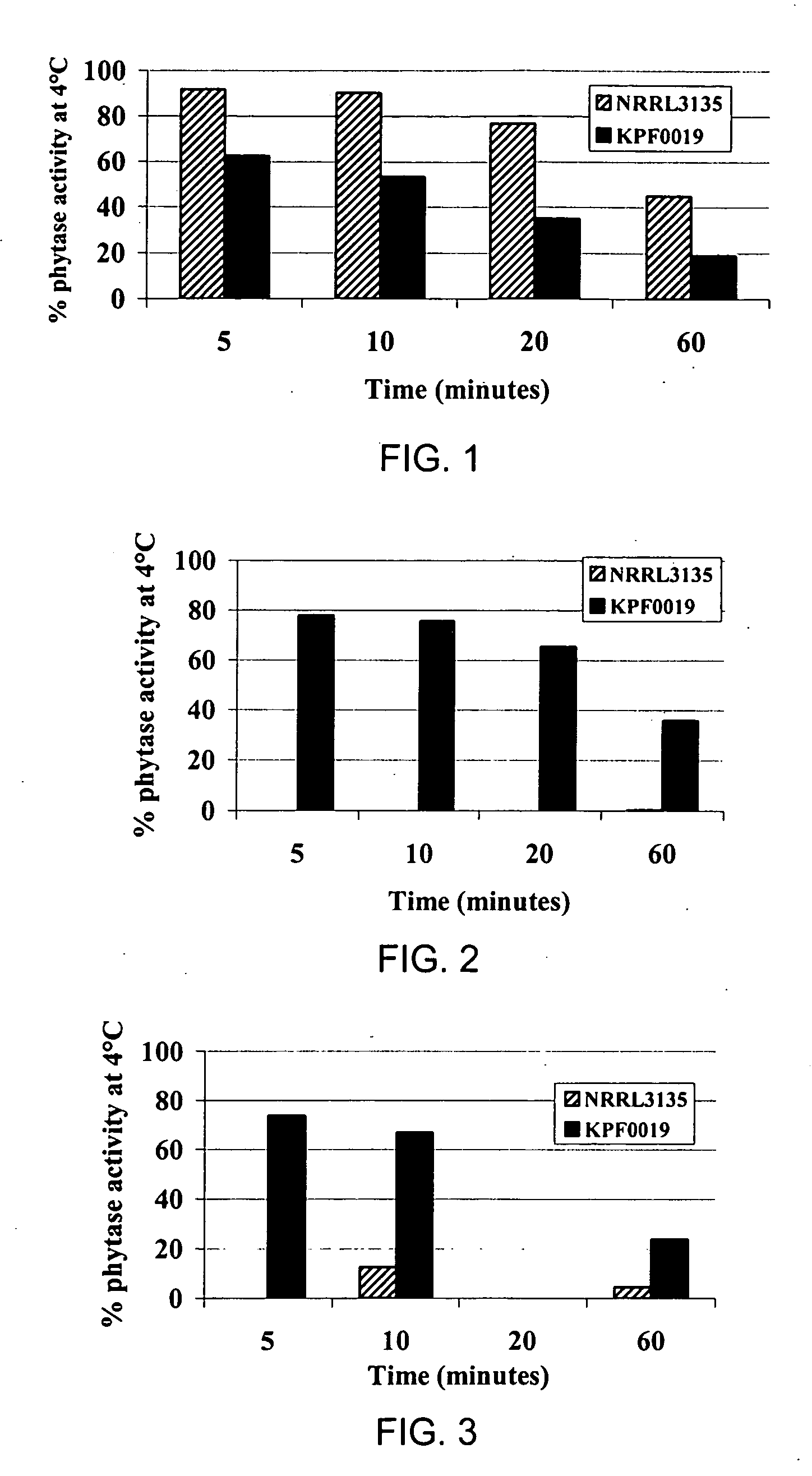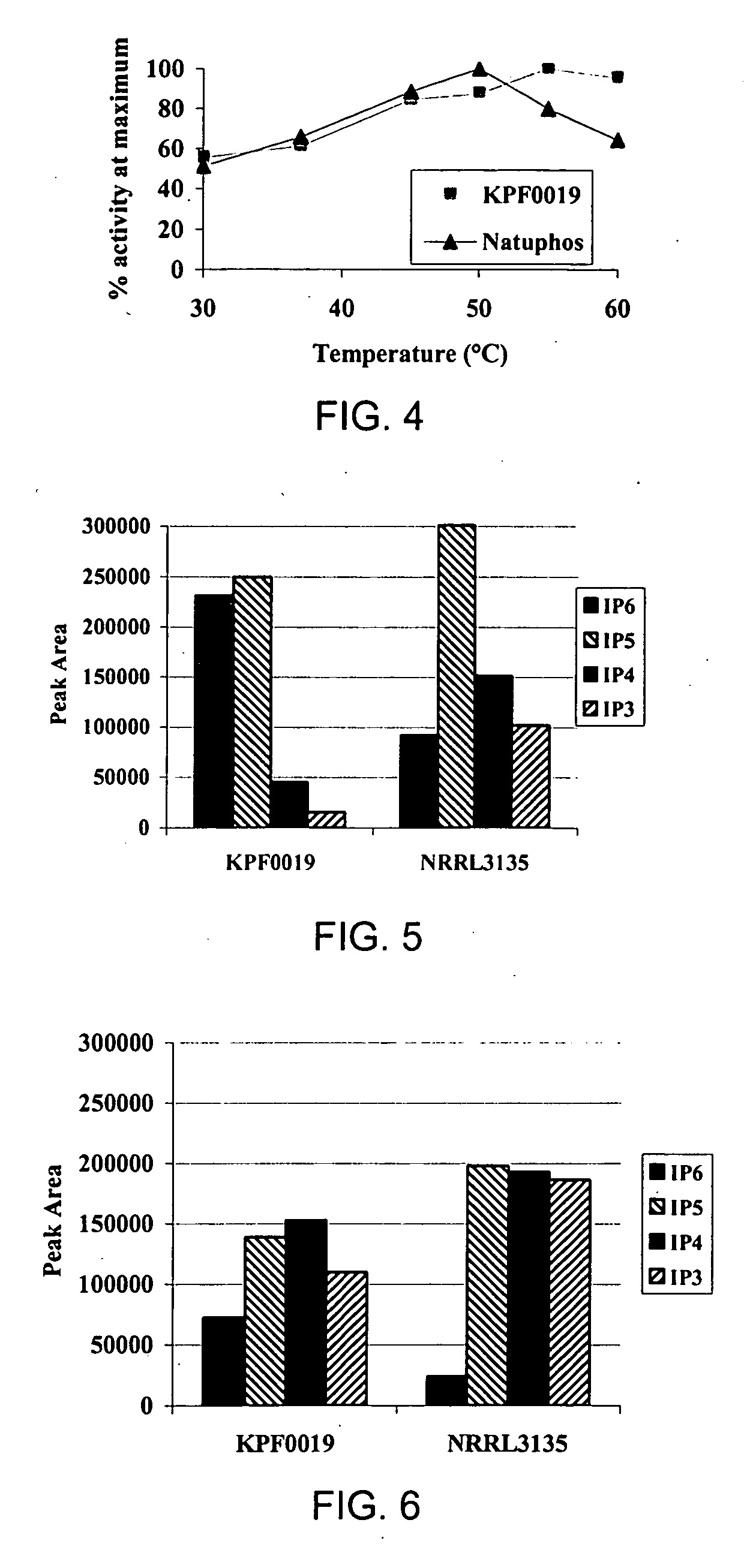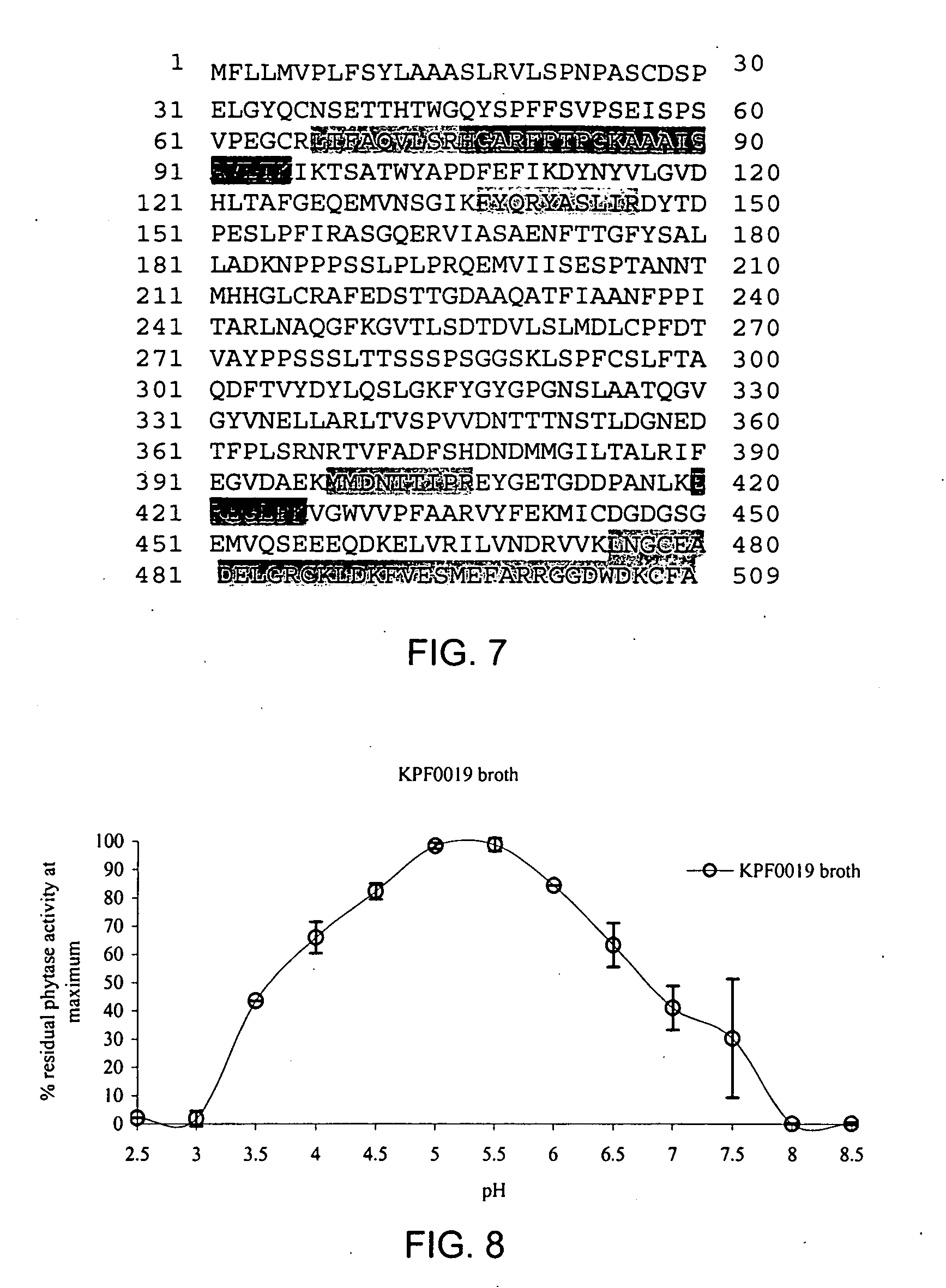Novel phytase and gene
- Summary
- Abstract
- Description
- Claims
- Application Information
AI Technical Summary
Benefits of technology
Problems solved by technology
Method used
Image
Examples
example 1
CREENING AND BIOCHEMICAL CHARACTERIZATION
A. Experimental Procedures
[0054] Materials. Phytic acid from rice and Fiske and Subbarow reducer were purchased from Sigma. All other chemicals and buffers were of the highest quality available from Fisher.
[0055] Strains and strain maintenance. Strains were selected from soil samples plated on phytic acid containing media. The plates were evaluated for clearing zones indicating phytate hydrolysis, as previously described by Shieh and Ware (15). Strains secreting putative phytases were grown on rich media for 7-14 days, and the culture broths assayed for phytase activity. Strains which appeared to secrete phytase activity were selected for isolation and placed on ISP2 slants (over 65 strains). From those slants, each strain was grown on ISP2 plates at 30° C. for 4-14 days (pass 1). The second passage onto ISP2 slants was also grown at 30° C. for 7-14 days to allow for sporulation, and then the strains were harvested with NTG and frozen at −...
example 2
A. Experimental Procedures
[0072] Strains and Media. Fungal strain KPF0019 was grown in K5 media (Nutrient Broth [Difco, Detroit, Mich.], 10% glycerol). Bacterial strains were grown in either Luria-Burtani (LB) broth (per liter: Bacto tryptone, 10 g; Bacto yeast extract, 5 g; NaCl, 10 g), on LB agar (LB broth plus 1.5% agar). For plasmid maintenance, ampicillin (75 μg / mL) was added to LB broth and LB agar when needed.
[0073] Fungal genomic DNA extraction. KPF0019 was inoculated into 25 mL K5 broth and grown for 4-7 days at room temperature with shaking at 160-180 rpm. Mycelia were harvested onto Miracloth (Calbiochem, San Diego, Calif.) by vacuum filtration through a Buchner funnel, transferred to 50 mL disposable Flacon tubes and placed at −80° C. until ready to use. Genomic DNA extraction was based on a method by Saghai-Maroof et al. (10). Mycelia were frozen with liquid nitrogen and ground to a fine powder with a mortar and pestle. Approximately 300 mg of...
example 3
N AND FURTHER BIOCHEMICAL CHARACTERIZATION OF PHYTASE FROM FUNGAL STRAIN KPF0019
[0081] Introduction. Media optimization was used to increase phytase expression from strain KPF0019 by 9-fold in liquid shake flask fermentations. The culture broth from KPF0019 was tested for its biochemical properties including pH and temperature activity profiles and pH and temperature stabilities. Data showed optimal pH at 5.5 and optimal temperature at 55° C. for both the phytase. The culture broth retained 40% phytase activity at 80° C. during temperature stability experiments and 60% phytase activity during pH stability experiments at pH 3 and 7.5.
[0082] Before biochemical properties could be determined for spent culture broth, media optimization was necessary to increase the levels of phytase expression by strain KPF0019. It has been shown that physical parameters influencing growth of an organism and its production of metabolites or protein are pH, temperature, agitation, dissolved oxygen, and ...
PUM
| Property | Measurement | Unit |
|---|---|---|
| Temperature | aaaaa | aaaaa |
| Temperature | aaaaa | aaaaa |
| Temperature | aaaaa | aaaaa |
Abstract
Description
Claims
Application Information
 Login to View More
Login to View More - R&D
- Intellectual Property
- Life Sciences
- Materials
- Tech Scout
- Unparalleled Data Quality
- Higher Quality Content
- 60% Fewer Hallucinations
Browse by: Latest US Patents, China's latest patents, Technical Efficacy Thesaurus, Application Domain, Technology Topic, Popular Technical Reports.
© 2025 PatSnap. All rights reserved.Legal|Privacy policy|Modern Slavery Act Transparency Statement|Sitemap|About US| Contact US: help@patsnap.com



